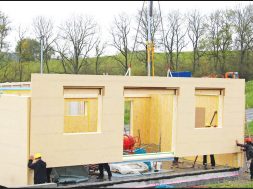Coalgate: Windfall Gain or Freefall of Indian Industry?
Scams like 2G, Coalgate etc. are contaminating the socio-economic and business environment of the country. Now, the onus is on every politician, policy maker and business leader to regain the lost glory
Though globally alternative sources are clinching growth in meeting power requirement, in India coal remains the major source of energy for producing electricity. About 70 per cent of the electricity consumed in India is generated through thermal power plants. Coal is the most frequently used fuel for thermal power plants as far as our country is concerned.
According to Energy Efficiency report by Enerdata and the Economist Intelligence Unit, coal is the country’s top energy source with 42 per cent of primary energy consumption in 2009, followed by biomass (26 per cent). Oil products covered 23 per cent of the country’s needs, gas accounted for 7 per cent, and nuclear and hydro electricity reached 2 per cent in 2009.
Coal – The Black DiamondIndia is one of the largest producers of coal with regions such as Orissa, Chhattisgarh and Jharkhand being coal-rich. However, keeping pace with rapid socio-economic development, the demand of coal is ever increasing. But resource augmentation and growth in energy supply has not kept pace with increasing demand and, therefore, the country continues to face serious energy shortages. The Coal Ministry has projected that India’s annual coal demand could rise over 40 per cent by March 2017 to nearly 1 billion tonnes while domestic coal output may increase by less than 30 per cent, leaving a gap of around 300 million tonnes that will have to be met by imports.
The Indian coal industry, one of the largest in terms of reserve base and production level, has gained significant momentum in the past few years. Mainly dominated by PSUs like Coal India Ltd, which contributes over 75 per cent of the country’s total coal production, the industry has attracted government concern and investments. However, India has not been able to minimise its coal deficit despite huge resource base, and still depends on imports. As per a latest estimation, the overall coal imports are anticipated to cross the 100 million metric tonnes mark in near future.
According to a RNCOS research report titled “Indian Coal Industry Forecast to 2013”, the coal demand has been rising constantly in India on back of high demand from major coal consuming sectors, including power, cement and steel. The study also analysed that plentiful coal reserves in Jharkhand, growing industry demand mainly by power sector, and the increasing government support will boost the coal production in the country. Research agency also estimates that coal production will grow at a CAGR of around 9 per cent during 2011-12 to 2013-14. It is also anticipated that the demand for thermal coal and coking coal by power and steel sectors, respectively, will gain momentum in near future.
RNCOS also observed that the Indian coal industry is set to witness a great boost in near future on back of strong government support and rising mergers and acquisitions of coal mines in overseas market. The presence of vast opportunities in coal washeries is also encouraging players to infuse money in them. Recently, de-allocation of coal blocks and stake sales in PSUs were among the major steps taken by the government to boost production and investment in the coal industry.
Coal block allocation processAs the economy grew in size, the demand for coal also grew, particularly due to expansion in the energy sector. It was felt that Coal India Ltd. alone would not be able to meet the growing demand and, therefore, the option of giving a bigger role to the private sector was explored.
With the objective of attracting private investments in specified end uses and to meet increasing demand of coal in the energy sector, allocation of coal blocks to private companies for captive use commenced in 1993 after the Coal Mines (Nationalisation) Act, 1973 was amended.
But, it was only in 2004 that for the first time, the idea of making allocations through competitive bidding was mooted and in 2005 the government initiated a proposal to amend the Coal Mines (Nationalization) Act. However, to bring-in greater transparency, the system was further improved in September 2005 and applications were invited through open advertisements against an identified list of coal blocks.
Coal block allocation guidelinesThe guidelines for the Screening Committee suggest that preference be given to the power and steel sectors (and to large projects within those sectors). They further suggest that in the case of competing applicants for a captive block, following guidelines may be taken into consideration: • Status (stage) level of progress and state of preparedness of the projects• Net worth of the applicant company (or in the case of a new SP/JV, the net worth of their principals)• Production capacity as proposed in the application• Maximum recoverable reserve as proposed in the application• Date of commissioning of captive mine as proposed in the application• Date of completion of detailed exploration (in respect of unexplored blocks only) as proposed in the application• Technical experience (in terms of existing capacities in coal/lignite mining and specified end-use)• Recommendation of the administrative ministry concerned• Recommendation of the state government concerned (i.e. where the captive block is located)• Track record and financial strength of the company.
Misappropriation in coal block allocation – CoalgateThough the ruling political party in Centre claims that ‘a fair and transparent procedure giving equal opportunity to all applicants’ was followed in allocating coal blocks; one after another allegations literally cornered them.
In a draft report issued in March 2012, the Comptroller and Auditor General of India (CAG) office accused the Government of India of allocating coal blocks in an inefficient manner during the period 2004-2009. The essence of the CAG’s argument is that the Government had the authority to allocate coal blocks by a process of competitive bidding, but chose not to. As a result both public sector enterprises (PSEs) and private firms paid less than they might have otherwise. The CAG estimated that the “windfall gain” to the allocatees was Rs 1,067,303 crore ($193.18 billion), with private companies obtaining Rs 479,500 crore ($86.79 billion) (45 per cent) and government companies obtaining Rs 507,803 crore ($91.91 billion) (55 per cent). The CAG Final Report tabled in Parliament put the figure at Rs 185,591 crore ($33.59 billion).
On August 27, the Prime Minister Manmohan Singh read a statement in Parliament rebutting the CAG’s report both in its reading of the law and the alleged cost of the government’s policies. The PM put out a point-by-point defence in Parliament, amidst opposition, competing that the Centre could not be charged with irregularities because it had only deferred to the views of State governments. While defending the government, Finance Minister P Chidambaram said, “If coal has not been mined, there is no question of gain or loss and the notion of this presumptive loss is flawed.” He also said that the coal referred to by the CAG and the Opposition party is still unexploited and the policy for allocation of the coal blocks has been the same since 1993.
Look beyond Rs 1.86 lakh crore scam! The key observation of the CAG’s report is that the Government did not follow a process of competitive bidding to allocate coal blocks though it has the authority. A comprehensive note on “Competitive Bidding for allocation of coal blocks” was submitted on 16 July 2004 by the then Secretary (Coal) before the Minister of State, Coal and Mines highlighting that”….since there is a substantial difference between price of coal supplied by Coal India and coal produced through captive mining, there is a windfall gain to the person who is allotted a captive block…..”.
However, CAG report revealed, “Delay in introduction of the process of competitive bidding has rendered the existing process beneficial to the private companies. Audit has estimated financial gains to the tune of Rs 1.86 lakh crore likely to accrue to private coal block allottees (based on average cost of production and average sale price of Opencast mines of CIL in the year 2010-11). A part of this financial gain could have accrued to the national exchequer by operationalising the decision taken years earlier to introduce competitive bidding for allocation of coal blocks.”
In July, an inter-ministerial group (IMG) on coal blocks, headed by Zohra Chatterji, Additional Secretary, Coal, was set up to recommend action against the coal block allottess for not meeting time-lines set for beginning production. Several corporate giants are under the scanner; atleast 10 major firms have been asked to present before the IMG to explain the reasons for missing their production deadlines. In a recent development, the IMG has recommended de-allocation of four mines allotted to private firms and encashment of bank guarantee of three others on the ground of non-development of mines within a prescribed time.
In addition, one after another report on ‘favouritism’ to the influential private players from the Coal Ministry, are keeping the government in unrest. The CBI has already registered cases against companies that secured coal blocks allegedly by making false claims.
Meanwhile, the major Opposition party remains firm in their demand of PM’s resignation and cancellation all 142 coal blocks which were allocated during UPA’s regime. However, Confederation of Indian Industry (CII) President Adi Godrej feels that mass cancellation of coal blocks will adversely hit the business sentiment. He demanded that government should take strong action against those who had acquired coal blocks by misrepresenting facts.
Undeniably, the recent revelations related to irregularities in coal block allocation have not only unearthed the skeleton within coal sector, have also unmasked the corporate-political ‘match-fixing’. The discrepancies within, if not addressed immediately with greater political willingness, the ‘coalgate’ will surely shuts many doors for rapid industrialisation!
5
Cookie Consent
We use cookies to personalize your experience. By continuing to visit this website you agree to our Terms & Conditions, Privacy Policy and Cookie Policy.









